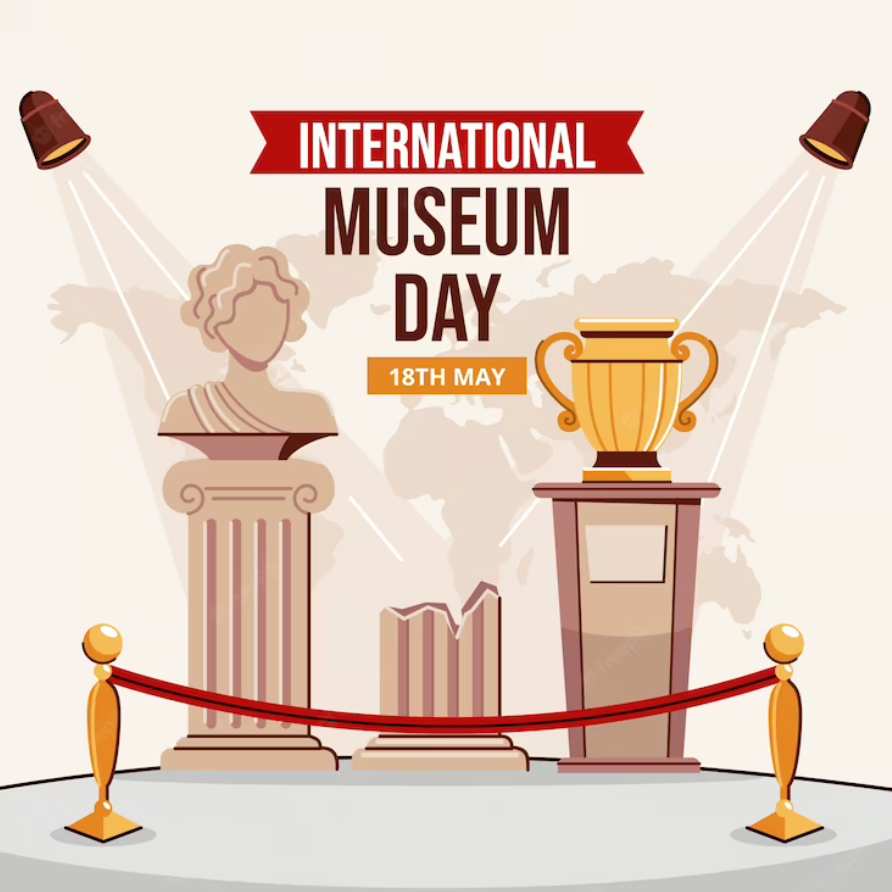– An article by Shivani Gadre
International Museum Day is observed to raise awareness about the importance of museums in society and to celebrate the cultural, educational, and historical significance of these institutions. It is an annual event that takes place on May 18th each year.
The International Council of Museums (ICOM) initiated International Museum Day in 1977 to promote museums as important cultural institutions. Since then, it has become a widely recognized and celebrated event across the globe. The main objectives of International Museum Day are:
- Promote awareness: The day aims to raise public awareness about the role of museums in preserving and showcasing cultural heritage, promoting knowledge, and fostering dialogue and understanding between cultures.
- Advocate for museums: It provides an opportunity for museums to advocate for themselves and showcase their collections, activities, and contributions to society. Museums can organize special exhibitions, events, workshops, and guided tours to attract visitors and engage with the public.
- Cultural exchange: International Museum Day encourages cultural exchange and collaboration between museums worldwide. Museums often collaborate on joint exhibitions or organize events and activities that foster dialogue, knowledge sharing, and cooperation between different cultures and communities.
- Education and learning: Museums play a vital role in education and learning. International Museum Day promotes the educational aspects of museums, highlighting their role as centers for research, study, and lifelong learning. Museums organize educational programs, workshops, lectures, and guided tours to engage visitors of all ages and backgrounds.
- Access and inclusivity: International Museum Day emphasize the importance of access and inclusivity in museums. It encourages museums to reach out to diverse audiences, including marginalized communities, people with disabilities, and those who may face barriers to museum access. Museums strive to create inclusive environments and develop programs that cater to a wide range of visitors.
Overall, International Museum Day serves as a platform to celebrate the significance of museums, recognize their contributions to society, and encourage people to visit and engage with these important cultural institutions.
India is home to several captivating museums that are definitely worth a visit. Prepare to be amazed as we explore a compilation of five distinct and captivating museums in India that are sure to surprise you!
- Mayong Central Museum and Emporium, Assam
Nestled in the village of Mayong, Assam, this museum holds a captivating allure. Known as the “Land of Black Magic,” Mayong village carries a legacy of mystical practices in India. For those intrigued by the eerie and enigmatic past of this region, the Mayong Central Museum is a must-visit destination.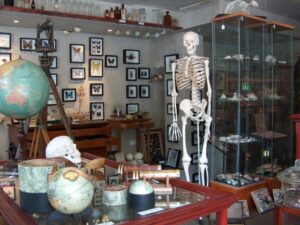
Within its walls, the museum houses a remarkable collection of witchcraft manuscripts, ancient texts on Ayurveda and Black Magic. Delve into a display of stone statues, bone and seashell jewelry, ancient coins, and swords that are said to have been employed in rituals of human sacrifice. Preserved by the villagers, these artifacts were once utilized by their ancestors for witchcraft and sorcery. As an added thrill, visitors may witness locals demonstrate ancient rituals, further heightening the spine-chilling experience. Prepare yourself for an unforgettable encounter that will send shivers down your spine!
- Sulabh International Museum of Toilets, Delhi
One of India’s most peculiar museums is the Sulabh International Museum of Toilets, renowned for its eccentric collection of lavatories. Surprisingly, it has earned the distinction of being ranked 3rd among Time Magazine’s “World’s 10 Weirdest Museums.”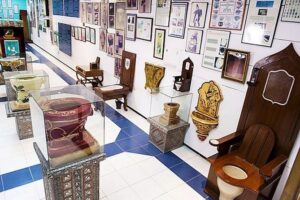
This unique establishment sheds light on the significance of sanitation and offers insights into the historical evolution of toilets. The museum was conceptualized by Mr. Bindheshwar Pathak, a sanitation expert. Its exhibits span an impressive timeline, ranging from toilets dating back 5,000 years, from the 3rd millennium B.C., to the late 20th century.
The museum showcases various sanitation arrangements, including those from the Harappan civilization, the Middle Ages, and even toilets from Akbar’s fort in Fatehpur-Sikri. It is truly fascinating to observe how this eccentric assortment of toilets represents different eras. Prepare to be astonished by extraordinary displays, such as Victorian toilet seats adorned with stones and toilets purportedly used by Roman emperors, crafted from gold.
The modern toilets section features intriguing items like a toy-commode from China, an American electric toilet, and state-of-the-art electronic toilets from South Korea, Japan, and other countries. Notably, there is a model showcasing the world’s largest toilet complex, located in Shirdi, Maharashtra.
A visit to this museum promises an unforgettable and thought-provoking experience, where you’ll gain a new appreciation for the humble yet vital invention, we often take for granted.
- The Human Brain Museum, Bangalore
Located in the basement of the National Institute of Mental Health and Neuro Sciences (NIMHANS) in Bengaluru, this extraordinary museum offers an unconventional experience. Within its walls, approximately 300 brain specimens, carefully preserved in jars. These specimens have been acquired from generous donors as well as victims of road accidents, each one carrying its own unique narrative.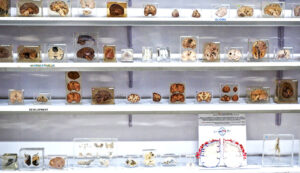
The museum, founded by Dr. S.K. Shankar, aims to enlighten visitors about preventive measures and available treatments for nearly 70% of the exhibited neurological conditions. It serves as an educational platform, shedding light on various diseases and their impact on the brain.
Perhaps the most peculiar aspect of this museum is the opportunity for visitors to hold a genuine brain at the conclusion of the tour. This extraordinary encounter allows for a hands-on understanding of this remarkable organ, fostering a deeper connection to the subject matter. Prepare yourself for an unconventional journey through the intricacies of the human brain, where knowledge intertwines with wonder.
- Sudha Car Museum, Hyderabad
Allow me to introduce you to the Sudha Car Museum, a delightful and unconventional creation brought to life by K. Sudhakar. Within this remarkable museum, an impressive assortment of antique cars and motorcycles awaits your discovery. The ingenuity displayed here has garnered accolades, including a Guinness World Record and a mention in the prestigious Limca Book of Records.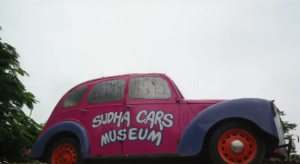
What sets this museum apart is its distinctive collection of handcrafted cars constructed from scrap metal. Prepare to be astounded by an array of automotive wonders, ranging from burger-shaped cars to vehicles resembling lipsticks, handbags, soccer balls, and even a whimsical laddoo car! The imagination and creativity that have gone into shaping these extraordinary automobiles is truly captivating.
Step into a world where cars and motorcycles transcend their traditional forms, embracing the realm of whimsy and novelty. The Sudha Car Museum invites you to embark on a journey through an automotive wonderland unlike any other.
- Doc’s Locks Museum, Gujarat
In Ahmedabad, a delightful destination awaits: the Doc’s Locks Museum, curated and operated by Dr. Hiren Shah, a pediatrician, and his wife, Dr. Namita Shah, a gynecologist. What sets this museum apart is its unique setting—it is not housed in a grand building but instead resides within the couple’s own home.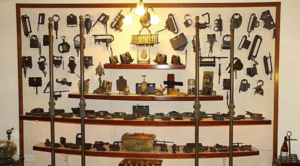
The name “LOCKs” stands for “Lovers of Old Collectables and Knick-knacks,” but don’t let that mislead you into thinking it’s solely dedicated to locks. Each room, from the entrance to the kitchen and even the bathrooms, boasts a treasure trove of distinct elements and artifacts. Alongside an impressive collection of antique locks, you’ll discover an array of fascinating items, including vintage furniture, ornate clocks, captivating peacock figurines, and intricate sculptures. What makes each piece even more remarkable is the personal story that accompanies it, adding depth and significance to the museum’s exhibits.
Among the notable attractions is a 250-year-old jharokha—a beautifully crafted ornate window frame—that was painstakingly assembled from 200 separate pieces, originating from a South Indian village. Dr. Hiren’s basement houses his renowned collection of nearly 2,000 locks, aptly named “Doc’s Locks.” Notably, around 600 of these locks are trick locks, constituting the largest collection of its kind in the world.
Prepare to be enchanted as you step into the Doc’s Locks Museum, a haven of fascinating curiosities that promises an immersive and delightful experience.
In conclusion, from the spine-chilling artifacts of the Mayong Central Museum to the intriguing collection of toilets at the Sulabh International Museum, these unique institutions have offered us a captivating glimpse into the unconventional, the peculiar, and the extraordinary. The Sudha Car Museum has ignited joy with its whimsical automotive creations, while the Doc’s Locks Museum has welcomed us into a world of curiosities within the humble walls of a home. As we wrap up our journey, let us celebrate the spirit of exploration and discovery embodied by International Museum Day, reminding us that museums are not mere repositories of history but serve as gateways to endless fascination and enlightenment.

